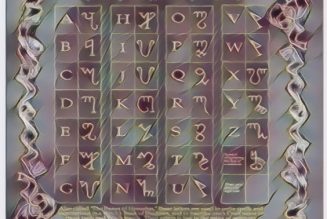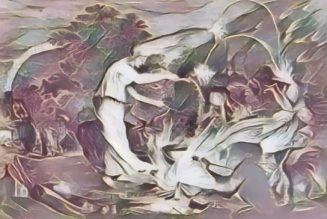The ability of witches to interfere with or destroy the fertility of man, beast, and crop.
This malicious destruction was considered a common activity among witches, and remedies and preventive actions circulated in folklore and magic.
Blasting is the antithesis of rituals to enhance fertility, and accusations of it date to the second century c.e.
Witches also were credited with the power to produce abundant harvests and ensure healthy offspring of livestock and humans, but during
the witch hunts this ability was largely ignored in favor of maleficia; witches could not be prosecuted by inquisitors for good acts.
Since fertility was vital to prosperity, it was believed that a witch who wanted to harm a neighbor would cast a spell on his generative ability or that of his livelihood.
If cows didn’t calve, if the corn failed to sprout, if the wife miscarried, then the household had been bewitched.
The bewitchment could be done with a look or touch but usually involved incantations and magic powders.
According to the church, God allowed the Devil to have power over the generative act because the first sin of corruption was sex; a serpent
tempted Eve; therefore, witches—the alleged agents of the Devil—could use snakes to impair fertility.
To blast crops, witches were said to take a flayed cat, toad, lizard and viper and lay them on live coals until they were reduced to ashes.
From this, they made a powder and sowed it in the crop fields.
To disrupt conception and cause miscarriages, stillbirths and the births of deformed young, they placed serpents under barns, stables and houses.
A medieval male witch named Stadlin in Lausanne, France, confessed (perhaps with the aid of torture) that he had for seven years caused miscarriages in the wife and animals of a certain household simply by placing a serpent under the threshold of the outer door of the house.
Fertility, he said, could be restored by removing it.
But the serpent had long since decayed into dust, and so the owners excavated an entire piece of ground.
After that, fecundity was restored to humans and animals alike.
In a story recounted in the Malleus Maleficarum (1486), a pregnant noblewoman in Reichshofen was warned by her midwife not to speak to or touch any witches if she ventured outside her castle.
She did go out and after a while sat down to rest.
A witch came up and put both hands on her stomach, causing her immediately to begin aborting the fetus.
She returned home in great pain.
The fetus did not come out whole but in little pieces.
Witches reportedly could blast generations of a family with such curses as “a heavy pox to the ninth generation” or “pox, piles and a heavy vengeance.”
With regard to humans, the Devil and witches also were believed to interfere with fertility by obstructing the sex act in several ways: by preventing bodies from coming together by interposing a demon in a bodily shape; by destroying desire; by preventing an erection, and by
shutting off the seminal ducts so that no ejaculation occurred.
These bewitchments were directed mostly at men because, it was said, most witches were women who lusted after men.
The Devil preferred to work through witches rather than directly because that offended God more and increased the Devil’s power.
The “removal” of the male organ by a witch was explained as illusion, though the Devil was said to have the power actually to take the organ away physically.
A spurned mistress, for example, might be a witch who cast a spell to make her lover believe he had lost his penis—he couldn’t see or feel it.
The only way to restore it was to get the witch to remove the curse; if she didn’t or couldn’t, the effect was permanent.
One story attributed to a Dominican priest tells of a young man who came to confession and proved to the father that he was missing his penis by stripping off his clothes.
The priest could scarcely believe his eyes.
The young man convinced the witch who’d bewitched him to remove her curse, and his penis was restored.
This type of bewitchment allegedly affected only those persons who were “sinful” fornicators and adulterers.
The Devil, apparently, could not disturb the organs of the pious.
Some witches were said to collect male organs and keep them in boxes, where they wiggled and moved and ate corn and oats.
The Malleus Maleficarum also tells of a man who lost his member and went to a witch to ask for it back:
She told the afflicted man to climb a certain tree, and that he might take which he like out of a nest in which there were several members.
When he tried to take a big one, the witch said: You must not take that one; adding, because it belonged to a parish priest.
Given the prevalence of folk magic in daily life in centuries past, and given the jealous and vengeful aspects of human nature, it is likely that individuals cast or paid to have cast blasting spells against neighbors and Witches
brewing up trouble to competitors.
The Inquisition used blasting to its own ends, as one of many justifications for the crushing of pagans, heretics and political enemies of the Church.
In Modern Paganism, Witchcraft, and especially Wiccan blasting and all other acts of harmful magic are considered unethical.
In Wiccan blasting is viewed as a violation of the law, “An’ it harm none, do what ye will.”
According to tenets of the Craft, Witches must use their powers for good, to help others, and work in harmony with nature
.
In many tribal cultures, however, such ethical distinctions are not made, and blasting continues to be among the acts of sorcery carried out against people, animals, crops and possessions.






